#keystoned
Text
Guys they reintroduced Galapagos tortoises to espanola island and they’ve essentially terraformed their environment, knocking over invasive plants so that endangered albatrosses (who need space to take off using the ground as a runway) have returned and established nests!
https://www.popsci.com/environment/galapagos-giant-tortoises-ecosystem-conservation/
14K notes
·
View notes
Text
5 reasons why we love sea otters
In kelp forests vast, where waves softly sway,
Dwells a creature revered for its engineering forte.
With luscious fur and eyes full of glee,
The sea otter emerges, a marvel to see.
Like guardians of the ocean, they tend to the kelp,
Keeping it healthy, providing it help.
By dining on urchins and crabs with delight,
They maintain harmony, day and night.
Tell us what you love, hooray,
As we celebrate World Otter Day!
2K notes
·
View notes
Text
"Two weeks ago [mid-June, 2024], Yellowstone National Park made headlines when a mother grizzly bear was spotted out and about with five cubs in tow — the biggest grizzly bear cub litter ever seen in the park.
Grizzly bears in that region of North America typically only have one to three bear cubs a litter.
Frank van Manen, the leader of the Interagency Grizzly Bear Study Team, said it was possible that an “adoption” event had occurred, in which two mothers give birth in the same year, and one ends up taking on the sibling’s cubs.

In an interview, van Manen told Wyofile that if the bears had all been born in the same litter, it would be the first five-cub litter “recorded in the history of the Greater Yellowstone Ecosystem.”
“Whether it was an adoption or whether it truly is a five-cub litter, it just amazes me that every year there’s some new surprise to us, even after intensively studying this population for more than 50 years,” van Manen said. “I just think that’s cool.” ...
On top of this record sighting, [Grizzly watch Bill] Hamblin is baffled by the sheer number of cubs that have been spotted so far in 2024.
Since they started emerging in the spring, the total count of unique grizzly bear cubs spotted has ticked up to a whopping 18 — triple the average number.
“That’s more than we’ve ever seen,” Hamblin said."
-via GoodGoodGood, July 3, 2024
#yellowstone#yellowstone national park#wildlife#grizzly bear#united states#wyoming#biodiversity#bears#baby animals#cute animals#baby bear#bear#biology#ecology#keystone species#wildlife conservation#conservation#endangered species#ecosystems#rewilding#animal conservation#good news#hope
1K notes
·
View notes
Text

Keystone Motel
"She tricked us ! Don't you feel used ,?!"
Teehee this is my favorite episode like ever I thinks
#ruby#ruby su#ruby steven universe#steven universe#sapphire#sapphire steven universe#sapphire su#keystone#keystone motel#art#steven universe fanart#digital art
2K notes
·
View notes
Link
Love how they used just a side view of the creek to minimize this. This is what the whole area looks like:
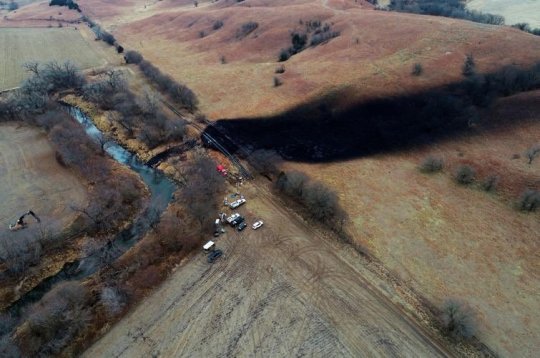
Here’s aerial footage:
https://twitter.com/NebPubMediaNews/status/1601676294638690304
Oh, and by the way, they said “barrels” because that sounds smaller since that’s over 500,000 gallons.
But it’s a “leak”. “...the affected segment being ‘isolated’ and the drip contained.” Just a liddle whoopsie doodle, tee hee. And of course there’s virtually no coverage on any news site. It’s already off the front page of The Guardian.
9K notes
·
View notes
Text
There's a plentiful supply of nature and ecology writers that criticize "Anthropocentrism" and tell readers that we shouldn't consider ourselves more important than other life forms, and then they write things that are like "We evolved to live in Nature in a Natural environment...Long ago humans lived as hunter-gatherers instead of farming and domesticating animals...But when civilization was created, man unnaturally subjugated and modified plants and animals...Bringing them under human control for his own benefit...Man replaces natural ecosystems with artificially created "post-natural" environments...Now humans live in an unnatural environment that is separated from Nature...and i'm like buddy. do you even hear yourself
Since I have access to a bigger library now, I've explored "deep ecology" and "green anarchism" and "Biocentrism" a bit more and what i've seen is still kinda silly. The writers have very thoughtful theory and philosophy of diverse subjects relating to morality, society, power, and liberation, but...they just don't know very much about Nature.
I mean several things by that: first, they're not clear on the boring, practical details of things like food systems and the way construction alters ecosystems, second, they don't try to clearly define what "nature" is, and third, they act like "nature" has a clear definition anyway.
Now nature is pretty much undefinable anyway, a couple possible definitions are "all things that exist, have existed, or are possible in the universe" and "the thing that a forest has that a parking lot doesn't." You can say "biodiversity," but every space has biodiversity, and it's not clear how much biodiversity a space is "supposed" to have, we're just going on vibes. And the vibes are right, in a way; I visited an old-growth forest and it was DIFFERENT than any place i'd ever been in a way that is hard to describe. A flourishing, biodiverse ecosystem is different than a parking lot, a lawn, a monoculture field of corn. They say it's good for your health to be "in nature." What does that mean? At what point does a place become "nature?" How many trees does it have to have?
Something that is so painful to me is when people write "Human activities" as a cause of biodiversity loss. This is an act of cowardice. WHICH human activities? Name them.
A lot of nature and ecology writings treat humans like they have an anti-biodiversity force field that emanates from them. They write like lands on Earth are each contested between two inversely proportional forces, "Nature" and "Humans."
Without any more information, this is ethereal bullshit on par with crystals having energies. I am totally perplexed at the lack of curiosity about the specific causes and details of "human impacts." The division of habitats by so many roads and relentless speeding of cars with no way for wildlife to cross...the dumping of massive amounts of poison into soils and water...the wounding and disturbance of topsoil...these are the "human activities," but we can imagine a world without such destruction, and we can create that world.
Too many essays and papers talking about Nature non-specifically, an Idea of Nature, a Concept that everyone just intuitively knows. Nature is...you know...wildness! and trees! and...well, you know, NATURE!
And we do know! When we step out into the parking lot surrounded by low, squarish buildings and blaring signs and the stink of car exhaust, we know that something is very wrong with this place! Even we find these horrible un-places harsh and unwelcoming.
But it is very hard to imagine something different, because the other type of place, the place that is beautiful and soothes the spirit and is full of life, is by definition the place where humans only go to visit, the complete opposite and inverse of a place where humans work and live! Wherever humans live, shop, eat, fulfill their daily needs, that place is Not Nature.
The huge mistake, is that we believe that it is necessary to have places that are Not Nature. We believe that for humans to exist, areas must be set aside where the very concept of Nature is utterly obliterated.
From this imaginary and dismal point of view, we have to carefully confine our own lives to places that are utterly poisoned, sterilized, made into a hostile wasteland, and leave all the rest of the living biosphere to itself in pristine preserves.
And in this imaginary and dismal point of view, the one that divides Earth into Nature and Humans, it is okay to poison and to sterilize and to destroy, because humans must live SOMEWHERE, therefore Nature must be utterly excluded from at least SOME of Earth.
BUT...WHAT IF EVERYWHERE IS NATURE? What if the dandelions in the cracks of the pavement, the lichens growing on the park bench, the wildflowers on the side of the road, the sparrows in the parking lot—what if they are all Nature just as much as anything else? What if they too are sacred? What if it is our responsibility to see the connectedness of all life and to care for all ecosystems, however broken and hurt they may be?
What if Nature is not distant and abstract, untouched in some pristine place, but always reaching out, digging into the crumbled concrete and gravel and compacted ground, clawing to return to us and bring us back home?
It does not take away from the value of the old-growth forest or the unplowed prairie if we open our eyes and see even the scraggliest patch of overgrown weeds for the powerful manifestation of Nature it truly is.
Nature is not a place or a thing. Nature is the Movement, the Endless Happening, constantly alive throughout all life, the way of all things being family, the way of all things taking care of each other, the way of all life being constantly transformed through one another. You breathe the breath of the trees of your home, you drink the water of the streams of your home, you eat the sunlight that falls on your home, grown in the soil where all things go to be transformed through death into a new form of life, fed by the mycorrhizal network, pollinated by the bees, wasps, flies, and moths, nourished by the bone, blood and manure of beasts, and ultimately the fertile river valleys where agriculture first began, were replenished by the rich silt that washed down the river, which came from the forests in the mountains that shed their leaves to make a feast for a million decomposing critters, which is how the rich soil is made.
In this way they all take care of you, and in return you are asked to Live—to take care of them in return, to live as part of the great family of everything alive, to live, to live
What are human activities...? Deforestation? Mining? Spraying pesticides? Building housing developments? But is that all? Are we inherently a "bad" and "destructive" species, or is our ability to acquire and pass down knowledge, use tools and novel behaviors, alter our surroundings, shape ecosystems, adapt our lifestyles almost infinitely, and persist in almost any environment, simply incredibly powerful for good or for evil?

First of all, what better way to demonstrate a contrast to anthropocentrism...than to compare the impact of humans alone to the impact of an ENTIRE KINGDOM OF LIFE, the fungi????? Of course all of Fungi are more important than one single species??? Wtf?!?!?
But also, we should not convince ourselves of our own insignificance and worthlessness to the biosphere, because in the same way that individual self-loathing can be a way to avoid the hard work of loving oneself and advocating for the love one deserves, collective self-loathing as a species is a way of avoiding the responsibility we have to other life forms.
How can this author not think of a single role Humans play in the ecosystem?? What species plants trees, saves seeds, documents rare plants, rescues injured animals and heals them, raises orphaned chicks, manages controlled burns, digs ponds, thoughtfully harvests in anticipation of future seasons, mercifully culls in understanding of suffering that cannot be fixed? What species writes a new chapter in the genome of the American Chestnut so it can be saved from extinction? What species mends the broken kakapo egg with sticky tape? What species addresses their own habitat with that fondest name of Home?
1K notes
·
View notes
Text

/ Gamma-Keystone, Moulin Rouge Dancers on the Eiffel Tower in Paris, September 1929
218 notes
·
View notes
Text
yes babe we can have sex but can I get back to talking about how vital planting native plants are
#look up what the keystone plants/trees are for your area!!#lesbian#femme lesbian#femme#femme4butch#butch4femme#butch#butch lesbian
241 notes
·
View notes
Note
So what's the deal with that new horse? Carlton or something
she's obsessed with being the fastest ever, absolutely hates anything that isn't a straight line and is incredibly serious and stoic while still being an open book and extremely emotional which just leads to her being insanely funny. also rude, her name is Keystone Light
also she adores cats (and constantly yells oht neko paradise in her sleep which annoys the shit out of her roommate) but because she's loud as hell they avoid her

she also constantly tries to race or pick fights with anything that moves
266 notes
·
View notes
Text
Sports Team Logos for DC Comics Cities
Used Photopea and took some liberties with the names.
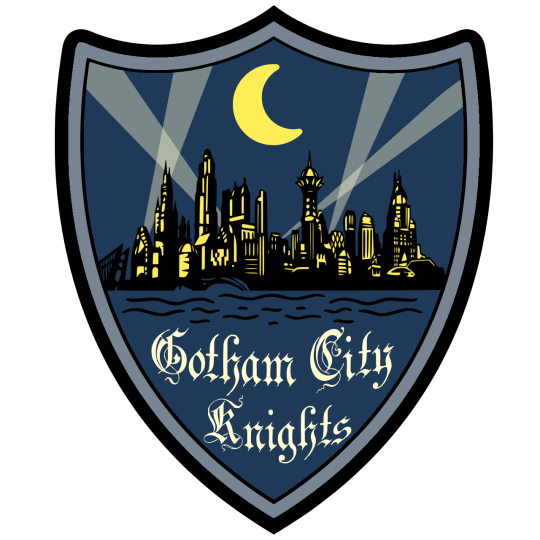
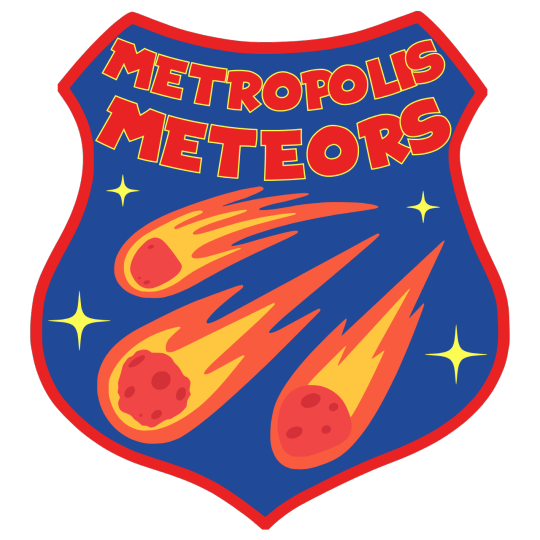






Fictional Etymology
The Knights⚾️: The Knights initially attributed their name to Gotham's history as an English colony though the double entendre was not lost on them, especially since the infamous "Gotham Nights" have become synonymous with the crime capital.
The Meteors🏈⚾️: Alliteration 🤷♀️.
The Spartans🏐: Gateway City possesses the largest collection of Greek artefacts outside of Greece and have a reputation for producing gold-medal-winning Olympians, inspiring the name of Gateway's Pro Volleyball team; the "Spartans".
The Sab-Cats⚽️: The Sab-Cats are a NWSL team born out of a social initiative by community centres in Star City using sport to keep youths away from crime. Recently turned professional, the team honours its mutual aid roots by adopting the Anarchist symbol of the "Sab-Cat".
The Velocity🏈: Keystone City has long been a hub of transport manufacturing, from automobiles to aircraft. The Velocity began as an amateur factory workers' football team in the 1940s, with its name referring to the cars these workers assembled.
The Cheetahs🏈: Initially named the "Central City Cougars", after the wildcat historically present in Missouri, the NFL team more recently renamed itself after the speedy African Cheetah in honour of its then residential speedster, the second Flash, following the first Crisis.
The Cosmos🏀: Before its destruction, Coast City was known along the West Coast as a melting pot of diversity, and its former NBA team derived its name, "Cosmos", from the word "Cosmopolitans".
The Bloodhounds⚾️: Before harmful radiation, Blüdhaven was plagued with corruption, often enabled by its police force. Some suspect strings were pulled for this former MLB team to adopt a blue kit and a common police dog as a mascot. Maybe it's a coincidence?
#go sports!!#dc#dc comics#gotham city#metropolis#gateway city#star city#keystone city#central city#coast city#blüdhaven#batman#robin#batgirl#superman#wonder woman#green arrow#the flash#green lantern#nightwing#bruce wayne#dick grayson#barbara gordon#clark kent#diana of themyscira#oliver queen#wally west#barry allen#hal jordon#comics
236 notes
·
View notes
Text
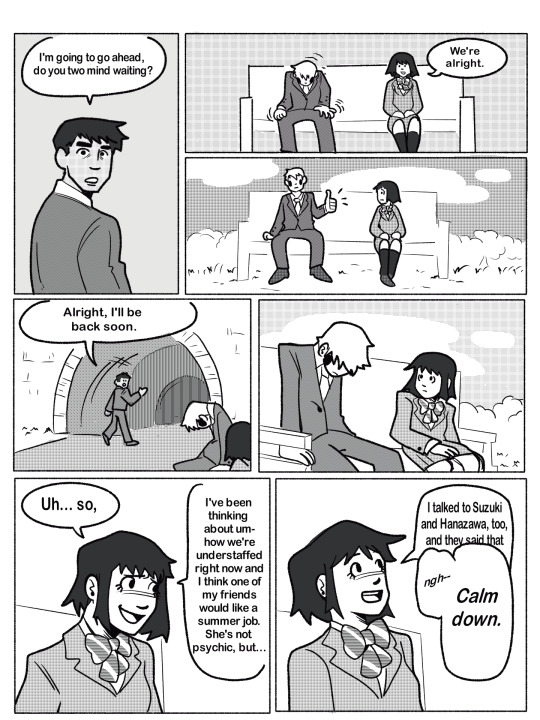
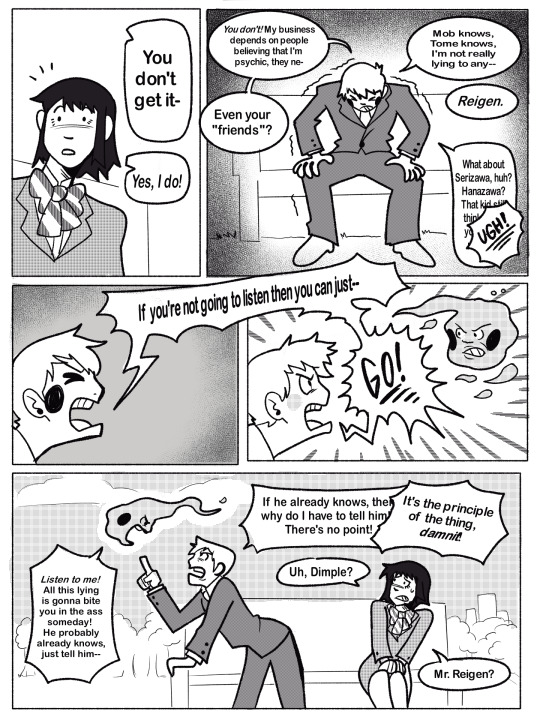
this was meant to be just making ekurei into a garnet moment but turned into a whole comic, oops!
(Please Reblog!)
#its the moment from keystone motel btw#ekurei#mp100#mob psycho 100#reigen arataka#dimple#serizawa katsuya#kurata tome#tome kurata#comic#dimple x reigen#reigen x dimple#op art#ekurei = fusion change my miiiind#dont change it actually#you cant
578 notes
·
View notes
Text
🌍🦦 We’re otterly excited to sea-lebrate World Otter Day! 🦦🌎

Whether they're floating, sliding, or just being their mischievous selves, these adorably aquatic, pawesome pals never fail to bring joy to our musteliday.

It’s time to unleash your inner otter and join us in a round of ap-paws in celebrocean of World Otter Day!
#monterey bay aquarium#theyre truly otter this world#having a shelluva good time#keystone species fur the win
1K notes
·
View notes
Text
The Kenya Wildlife Service celebrated the successful transfer of 21 eastern black rhinos to establish a new viable breeding population for the species that was on the brink of extinction decades ago.
In an 18-day exercise executed by highly trained capture and veterinary experts, the Loisaba Conservancy received the 21 rhinos from three different locations, becoming the 17th sanctuary in Kenya where the mammoth animals can roam and intermingle.
“It’s incredibly exciting to be part of the resettlement of rhinos to a landscape where they’ve been absent for 50 years,” said Tom Silvester, CEO of Loisaba Conservancy.
Kenya had 20,000 black rhinos in the 1970s before poachers decimated them for their horns. By the time the Kenya Wildlife Service (KWS) was established in 1989, rhino numbers had declined to below 400.
Since then, Kenya’s eastern black rhinos have made a remarkable comeback and today there are an estimated 1,004 individuals.
Kenya is a stronghold of the eastern sub species of black rhino, hosting approximately 80 percent of the entire world’s surviving population.
“Surpassing the milestone of 1,000 rhinos within four decades is a significant accomplishment,” said Munira Bashir, Director of The Nature Conservancy in Kenya.
The reintroduction this month of these 21 animals this month is a great milestone in Kenya’s rhino recovery action plan, and was made possible by support from The Nature Conservancy, San Diego Zoo Wildlife Alliance, other partners—and the three reserves from where the 21 rhinos originated, Nairobi National Park, Ol Pejeta Conservancy and Lewa Conservancy.
“In the recent past, one of the main causes of mortality of rhinos has been territorial fights due to limited space in sanctuaries which has also led to suppressed growth rates due,” explained Dr. Erustus Kanga, the Director General of Kenya Wildlife Service. “I am elated to be associated with this momentous effort to secure more space for this cornerstone species.”
Meanwhile, southern white rhinos continue to thrive in Kenya, having increased from 50 individuals that were imported from South Africa in the eighties and nineties to reach the current population of 971 individuals.
Kenya is also playing a critical role in efforts to save the northern white rhino from extinction, as it is host to the only remaining two females of the species left in the world. The international BioRescue project has developed thirty embryos awaiting implantation into surrogate females within the closely-related subspecies of southern white rhino.
“The return of black rhinos to Loisaba, 50 years after the last known individual here was killed by poachers in the 1970s, is a demonstration of how impactful partnerships between governments and conservation NGOs can be for restoring, managing, and protecting our natural world,” said Dr. Max Graham, CEO and Founder of Space for Giants, one of the project partners.
“And, of course, the return of black rhinos here gives all of us one of the most precious commodities of all: hope.”
-via Good News Network, February 25, 2024
#rhino#rhinoceros#conservation#hope posting#endangered species#wildlife#kenya#good news#hope#zoology#zoo animals#keystone species
353 notes
·
View notes
Text
wally: ew you’re from jersey, i just realized
dick: …at least we can openly hold hands in my state
wally: WOAH HEY-
#hey dc pls actually give us a location for keystone and not a bunch of different answers#one of them said central city is in florida#and keystone is a sister city so like ???#anyways another silly pride month post#dc comics#dc#dick grayson#wally west#nightwing#kid flash#flash#birdflash#incorrect dc quotes#incorrect quotes
195 notes
·
View notes
Text
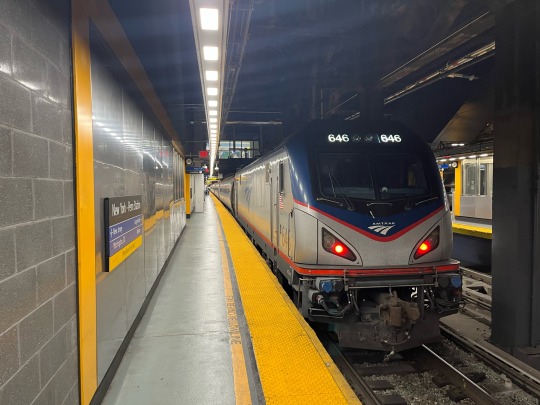
I got the lucky chance to ride Amtrak’s Keystone Service from Philly to New York and I have to say I am in love. This is just about the best of what Amtrak could be doing everywhere and it is criminal we are not doing this for more American cities
We really need to nationalize the rail network, and give Amtrak a budget to rival the US military
#amtrak#amtk#train#passenger train#trainposting#trains#keystone service#public transit#transit#penn station#train station
442 notes
·
View notes
Text
The State Birds Initiative: Pennsylvania (#2)

Welcome to the second official poll of the State Birds Initiative! Before the poll, though, one thing real quick. My suggestion is that you read the post below before voting in the poll below. That's especially important if you're lacking any context about the birds being presented as the new (or old) State Bird of the Keystone State, Pennsylvania. This is to be fully informed as to why these are being presented, and to make your choices appropriately. Lastly, some of these birds, you will notice, may go against some of the rules listed in the introduction post. All is explained after the jump where the explanations are, I promise you that. But with that...OK! Here's the poll! More choices this time, but that's definitely a bit deceptive. Trust me, read the stuff after the jump, you'll see why.

LET'S GO PHILLY
Kidding on two fronts. One, not a massive sports fan, and not really a fan of any Philadelphia teams (I love Gritty, though. Always and forever.). And two, this is obviously not a post about Philadelphia. So, let's talk about the Quaker State, Pennsylvania! The capital is Harrisburg, while its biggest city is Philadelphia. Pennsylvania is, of course, the first capital of these United States, and arguably the seat of the country. It's the home of Benjamin Franklin (even though it wasn't his birthplace), the Liberty Bell, the Constitution, and Rocky Balboa. And of course, its perfect symbol: Gritty.

God, he's beautiful. The perfect mascot. Who cares about the Flyers; Gritty's who I'm rooting for. Anyway, amazing and unassailable symbols of chaos aside, we're here to talk about Pennsylvania's natural world. So, what are we looking at. Well, it's a mostly deciduous forest-dominated state, so we're looking at seasonal forests and probably seasonal birds...for the most part. At the very least, our ideal bird is a forest resident and breeder in the state. Nothing too unusual or difficult to find.
Birding in Pennsylvania is pretty stereotypical to that of the northeastern United States. There are a few major spots, especially those that graze the Appalachian Mountain Range, which runs through the state. As for conservation concern, habitats of focus are the Appalachian forests that are often deforested for development, especially in the areas near Philadelphia. No real surprise, but that's a good target for conservation focus.

As for Pennsylvania's culture, it's famously descendant of the Quakers, who founded the state under the leadership of William Penn. This isn't to say that Pennsylvanians are Quakers; if you've been to Philadelphia, you know that's not true. According to a few accounts I've seen, that essentially means there's an attitude of helpfulness to your neighbor within the state, as well as a cultivation of the value of hard work. It's also a state that prides its history pretty thoroughly, from Philadelphia's various museums and public historical monuments, to the historical communities that thrive in the state, like the Lancaster Amish. Not sure how either of those will translate themselves into birds, but...hey, we'll see, right?
I also saw somebody refer to PA as heavily into "snack culture". And I'm not entirely sure what that means, but I WILL take the opportunity to say one thing: do not waste money on the cheesesteaks at Pat's or Geno's. It's meant to attract tourists, and they aren't worth it, BELIEVE ME. There are better cheesesteaks in the city, from what I've heard, but those two are...not worth the money. Just trust me on this one.

That said, it's time to look for a proper state bird for Pennsylvania. There's some emphasis there on the "proper", and the first entry in the following section has an explanation by that. With that, let's go for it! State Bird nominations for Pennsylvania below the jump!

Ruffed Grouse (Bonasa umbellus)
OK, let's start with the current bird highlighted by Pennsylvania, the Ruffed Grouse (Bonasa umbellus). Now, I love these guys. If you've never experienced it, walking through the woods and suddenly hearing a deep thrumming echo through the trees is...it's a unique sensation. You wonder where it's coming from, why and how it's so loud, what's making it, and then...it just pops up. Maybe it sees you looking for it, and you flush it out and watch a panicking male run away. Maybe he just looks back at you puffed up and stands his ground a bit (which is unlikely, but still). Either way, these guys never cease to put a smile on my face.
This behavior is called drumming, by the way, as pictured above. A male grouse will position themselves on a hollow fallen tree, and use it as a megaphone to send out these vibrations across swathes of territory. It is, unsurprisingly, a territorial behavior for the grouse, and iconic in its own way. Now, a few more facts about the Ruffed Grouse. The name, by the way, comes from the feathers on the sides of the male's neck, which are erected during courtship and territorial displays. It's obviously colored to camouflage in the fallen leaves of deciduous forests, where it resides throughout the year. They're granivorous members of the Galliformes (grouse, pheasants, quail, etc.), and fairly common in the Eastern United States. But with that said...here's the big problem with this choice for State Bird.
It isn't a State Bird. It's a State Game Bird.

Yeah, remember the Delaware Blue Hen from the last poll (assuming you read it, here it is if you didn't)? I suggested that it should be the State Game Bird of Delaware, rather than the State Bird. Well, right next door to Delaware, Pennsylvania already has a State Game Bird in the form of the Ruffed Grouse. Why, you ask? Well, first off, the Ruffed Grouse is actuall known as the "King of the Gamebirds" colloquially, crowned such by William Harnden Foster, the father of skeet shooting. Yes, actually. But anyway, the bird was declared the State Game Bird in 1931, but there was not real reason why outside of popularity with hunters. So...OK, fair enough. It just means that the Ruffed Grouse is not a State Bird. But should it be?
The question asked here is, should the Ruffed Grouse be promoted to a State Bird, since most Pennsylvanians seem to think of it as such anyway? Well, looking at the guidelines we've previously set and established...I don't know, honestly. And my main reason for doubt, personally, is the fact that the grouse, while found in Pennsylvania, is BARELY a breeder in the state. Only 0.4% of the bird's overall breeding population is in Pennsylvania, and only 13% is in the United States at all. And yes, that means the species is mostly found in...

So, when you think about it, is this truly the answer to the PA State Bird question? Well, it does represent much of the biome of Pennsylvania, a forest-dominated state squarely in the temperate and deciduous zone. It has a history and culture of hunting, and the grouse is certainly one of the most popular species on that front. And they're certainly iconic, and easy to hear in most forests, not to mention fun to look and listen for for beginning birders. The first time I stumbled on a Ruffed Grouse was, lemme tell you, a delight. And the second time, I LITERALLY stumbled on them, because a mother and her chicks were running away from me, and one of the chicks ran between my feet from behind me to join its mother, and I have NEVER BEFORE FELT MORE LIKE A DISNEY PRINCESS UNTIL THAT MOMENT IT WAS FUCKING MAGICAL
But, yeah, with that said, I submit the Ruffed Grouse for your deliberation as a State Bird. And as for a State Game Bird...oh, I've got a thought on that one, too. But I'll save that until the end, I think.

Scarlet Tanager (Piranga olivaceus)
So, as before, let's start the replacement options with a bird suggested by the Cornell Lab of Ornithology, and a solid-ass pick for a number of reasons. The Scarlet Tanager is one of the most striking birds in the eastern United States, and there's no state with a larger breeding population of these birds than Pennsylvania. 13% of the species' global breeding population is found in PA, making the state a major staging point for the species. Native to and dependent upon the deciduous forests of the state, this is a hidden ornithological icon.

Chestnut-sided Warbler (Setophaga pensylvanica)
Well, if I had the Ring-billed Gull (Larus delawarensis) listed for Delaware, it only makes sense to list the Chestnut-sided Warbler (Setophaga pensylvanica) for Pennsylvania! Similarly, it's the only species that have Pennsylvania as a state in the species name. And trust me, this is a rare luxury, either because most states have no bird species named for them, or a LOT of bird species named for them. Just wait for the Carolinas or California, believe me. But that said, is the Chestnut-sided Warbler a good fit for Pennsylvania?
Well, it certainly breeds in the state; the majority of the global population breeds in Canada, like the Ruffed Grouse, but a good amount still breeds in the deciduous temperate forests of the USA. The PA breeding population represents 3% of the global breeding population, and as compared to Michigan's 7%, Pennsylvania still doesn't have the majority. But again, let's put that statistic to the wayside. Is there anything else about the Chestnut-sided Warbler that represents Pennsylvania in a meaningful way? Well...no. Not, not really. There is a story of John James Audubon (yes, that Audubon, the racist one), and his first AND ONLY sighting of the Chestnut-sided Warbler, which took place in eastern Pennsylvania, alongside his hunt for the species throughout his life. So, hey, there's a tie. But other than that, this is another opportunity to choose an handsome looking bird that serves as a unique bird to look for for Pennsylvanians, any of whom can say, "Hey, I've seen that bird! Cool!"
...Wait, I just realized something about this category of choice. Pennsylvania has more species name reputation than I thought...indirectly. Hmm. Let's combine their entries.

Philadelphia Vireo (Vireo philadelphicus)
Bonaparte's Gull (Chroicocephalus philadelphia)
Mourning Warbler (Geothlypis philadelphia)
There are, in total, three species that are named after the great city of Philadelphia, Pennsylvania. And this is both the only one with the city name in its common name...and also the worst choice of the three. At least the Bonaparte's Gull (Chroicocephalus philadelphia) and the Mourning Warbler (Geothlypis philadelphia) breed in the state. And for the record, those are up for debate for this spot if anybody world prefer those go in there. But if those are better options (barely; both birds also barely breed in Pennsylvania), then why choose the Philadelphia Vireo?

Is it iconic? To birdwatchers, maybe, but mostly because it's a pretty difficult bird to get when you're starting out. I've seen them, but it's not easy to find them. And to the layman? It's a little green bird that lives in green trees. Oof. Hard sell for a state bird. At least Bonaparte's Gull (above) is visible on bodies of water, and a fairly common bird alongside being an unusual-looking gull for most people. Plus, hey, they're kinda handsome and cute in my opinion. What about the Mourning Warbler (below)? While also somewhat difficult to find by virtue of being a little green bird, has a notable and memorable appearance. But you could also argue that it belongs rightly to other states instead.

But the Philadelphia Vireo? Yeah, it's the worst candidate of the three, but...it's also the only warbler who once carried the name Brotherly-Love Vireo. Yeah. As in Philadelphia, the City of Brotherly Love? That is a good reason. However, you could argue that, given the fact that the work "philadelphia" is literally Greek for "brotherly love"...it's still a flimsy argument. But hey, I'd be remiss if I didn't include these guys on this list for State Bird, even if I...doubt they're gonna get any votes.

Pileated Woodpecker (Dryocopus pileatus)
For one of two conservation-related entries of this post, let's take a look at the Pileated Woodpecker (Dryocopus pileatus). Now, to get this out of the way, the Pileated Woodpecker is all over the Eastern USA. These big, crow-sized woodpeckers (and these guys are HUGE when you see them for the first time; love 'em) are a common sight in deciduous and coniferous forests (the predominant habitat in PA), and are most certainly breeders in Pennsylvania. They're iconic enough, fun to find, and can be detected through signs they leave in trees. Namely, of course, I'm referring to the nest hollows they make in trees for their offspring, as well as holes made to search for insects. But, OK, same question as always, why suggest it for the PA State Bird?
The pileated woodpecker, as the big bird it is, is an ecosystem modeler. What this means is, those holes they carve in trees are used by other species, including owls, squirrels, weasels, ducks, and various others that live in the same areas. Pennsylvania's wildlife isn't above using Pileated Woodpecker holes for their own uses, making the birds extremely important for other species. Ecosystem architects are not uncommon in nature. Most of your probably think of the American Beaver (Castor canadensis) or the American Alligator (Alligator mississippiensis) when that topic comes up, but there are many others. In ecology, there's a term for species that modify their environments in ways that become significant for the survival of other species. Because other species rely on them, they're referred to as keystone species.
Get it?

Pennsylvania is also known as the Keystone State. And, like beavers and alligators before them, woodpeckers are also keystone species. This isn't a commonly talked about aspect of woodpeckers, but the Pileated Woodpecker in particular is getting some recent attention as a keystone species. So, why not highlight this recently proposed classification and give the Keystone State a Keystone Species for its State Bird? It serves as a lesson in ecology for everyone, school kids or the uninformed, and it's a great way to make the State Bird about Pennsylvania's ecosystems. Conservation-focused, and an iconic species to boot!
Do I think the Pileated Woodpecker is the best species for Pennsylvania on it's own merits? I don't know, honestly. Like I said before, it's a fun-to-find iconic bird, it breeds in the state, and there's not real reason it shouldn't be the state bird. But I really like the idea of giving the Keystone State a keystone species, and not a lot of North American birds act in that role. If anybody has a better suggestion, I am all ears, but I think this one works pretty well. Plus, hey, there's only one woodpecker amongst the State Birds, which is a shame! Who doesn't love woodpeckers?

American Goshawk (Accipiter atricapillus)
For the other conservation entry of this list, we once again turn to a raptor, and a damned cool one at that. Previously referred to as the northern goshawk, the American Goshawk (Accipiter gentilis) is a silent and efficient predator. One of the most skilled forest flyers amongst the accipiter hawks, these birds specialize in rodents and birds that live in the trees, and are amazing at weaving through the understory to catch their prey. I adore goshawks, and they're honestly a bit terrifying. I used to work at a raptor rehabilitation facility which bred these guys in central New York, and they're beautiful and terrifying. Also, I've held one in a towel burrito, and that was a highlight of my life.
Now, with that said, the goshawk is barely found in Pennsylvania in recent years, although it used to be quite common. The Fish and Game Department, alongside Audubon, have this as a species of major concern and focus in Pennsylvania, despite (for because of) a very small breeding population. But there's a sad reason for this, making this a VERY good candidate for State Bird. See, in the 1900s, goshawks were considered pests, due to their love of chicken and wild game birds. Therefore, they were regularly shot, and Pennsylvania in particular offered rewards for their bodies.

By 1931, goshawk populations in Pennsylvania plummeted. This was also when the early 20th century environmentalist movements started, and this issue in particular was noticed by environmentalist and suffragette Rosalie Edge. To save hawk populations in Pennsylvania, she purchased a piece of land to bar the hawk-hunters on the property. This was called Hawk Mountain, and was founded in 1934 as the world's first raptor preserve. Yeah. Not only was it the first of these, but one of the first (if not THE first) created by a woman. Let's fucking go. Rosalie was a known bad-ass in conservation, and regularly did shit like this for what she believed in. An unsung hero of conservation and ornithology.
The hawk hunts ended alongside the Pennsylvania Game Commission in the 1950s, and raptor conservation continued on as a major movement in the state of Pennsylvania. Hawk Mountain in particular became a massive centerpoint of this, and today, it's maybe the most famous place in the United States to watch the annual fall and spring migrations of raptors. The raptor counts at Hawk Mountain Sanctuary are an annual bonanza, attracting birders from near and far. Haven't made it there yet myself, but it's on my list of must-bird locations. I implore you to learn more about this wonderful place. Check out their YouTube channel if you want to know more from their perspective! And it's all based on the impressive conservation story of the American Goshawk. I think that makes it a pretty goddamn good candidate for State Bird. Brings attention to conservation history, and on a major natural phenomenon that can be seen every year in Pennsylvania. Pretty goddamn cool.
The hell is even left after that? Well...

Wild Turkey (Melagris gallopavo)
OK, hear me out here. Of ALL the birds in the USA, if there is any state should have more federal recognition, it's the Wild Turkey (Meleagris gallopavo). It's the only bird that essentially has a holiday dedicated to it (OK, dedicated to killing and eating it, but you get what I mean). It's also, notoriously, the alleged runner-up for national bird, having lost to the Bald Eagle (Halieetus leucocephalus). To be fair, here, that's a potential urban myth, but an important one regardless, especially to Pennsylvania.
Other than this, though, everybody knows what a Turkey looks like. It's arguably one of the top 5 iconic wild birds of the USA, and is very common throughout the country. It is, in fact, found in every one of the Lower 48, and in Hawaii (introduced there). Not Alaska, though. Which is good, because frozen turkey is dangerous. Ha ha ha. But is that an argument for Pennsylvanis to have it as the State Bird, or even as the State Game Bird? Because that's also an option, for the record. I argue, though, that Alabama, Massachusetts, Oklahoma, and South Carolina already have it as a State Game Bird, which especially makes sense for Alabama, which is prime turkey-hunting ground. As is, for that matter, Pennsylvania. Turkey season here is longer than in most places, and according to HuntStand, it's basically a culture there in and of itself. So, yeah, appropriate on that front alone. But that said...Pennsylvania should own the turkey for one more important reason.

I mean...Benjamin Franklin. Come on. You gotta give it to Pennsylvania's favorite son. I've been to the Franklin Institute, I KNOW how beloved he is in PA. And Benjamin Franklin, famously, loved two things: wild sex parties with older women, and the Wild Turkey. AND I QUOTE:
For my own part I wish the Bald Eagle had not been chosen the Representative of our Country. He is a Bird of bad moral Character. He does not get his Living honestly.
...For the Truth the Turkey is in Comparison a much more respectable Bird, and withal a true original Native of America… He is besides, though a little vain & silly, a Bird of Courage, and would not hesitate to attack a Grenadier of the British Guards who should presume to invade his Farm Yard with a red Coat on.”
Now, contrary to popular belief, this is not Franklin saying the Wild Turkey should be the national bird. This is, instead, Frankling saying that he fucking hates the Bald Eagle, whom he sees as a lazy, thieving, selfish, disrespectful, manipulative asshole. So, yeah, in retrospect, not an inappropriate symbol for some parts of the country. But regardless, he's right about turkeys: they do not give a shit about your boundaries if you're on their land. Trust me, I live in an area of New England where there are some BIG fuckin' turkeys, and they WILL CHASE YOU if you mess with them. I SEEN IT

With that, though, I think we've covered the major candidates for the State Bird of Pennsylvania. Any I've missed or forgotten? Any suggestions you may have? I'm all ears! Make sure to vote, and come back for state #3: New Jersey. Which...I think a lot of us have thoughts on. Although, hey...I don't hate the State Bird. Well, as a bird, anyway; I'm indifferent to it as NJ's bird. More context next time, I promise.

See you soon, and happy birding!
#birds#bird#birding#birders#birdwatching#birdwatchers#black birder#state bird#state birds#united states of america#USA#state bird initiative#state birds initiative#pennsylvania#ruffed grouse#scarlet tanager#chestnut sided warbler#vireo#philadelphia vireo#gull#seagull#bonaparte's gull#mourning warbler#warbler#pileated woodpecker#woodpecker#keystone#goshawk#american goshawk#northern goshawk
126 notes
·
View notes